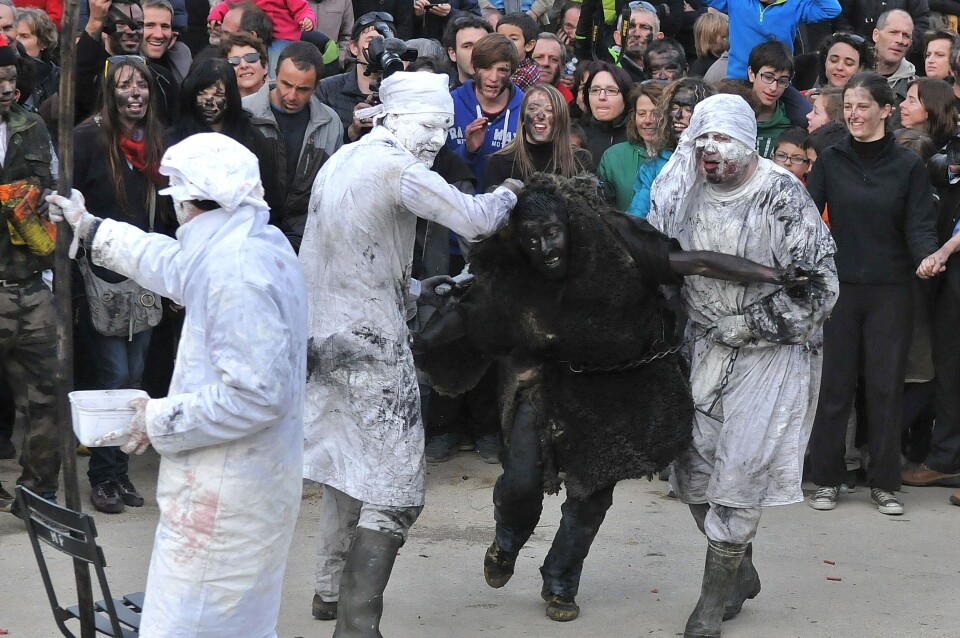-
Five French films and series to watch in November
Using stories and shows you are already familiar with can be a big help when learning French
-
Step back in time for some ‘dinosaur’ planting in your French garden
Captivated in the garden this month by one species of plant that dates back 200 million years, and another which is one of the oldest flowering plant families on the planet
-
November events in France: art, history, and early festive magic
Explore the best cultural events, from John Singer Sargent's exhibition in Paris to festive celebrations at Château de Vaux-le-Vicomte
France’s mediaeval ‘bear hunt’ festivals added to Unesco heritage list
The Fête de l’Ours now takes place in just three villages in south-west France each February, and celebrates the end of winter

Bear festivals in the Pyrenees have been added to Unesco’s Intangible Cultural Heritage list – along with French baguette-making.
The Fête de l’Ours takes place every February in three villages in Haut Vallespir (Pyrénées-Orientales), south west France, and two in Andorra, and celebrates the end of winter.
Each village practises slightly different customs.
In Prats-de-Mollo-la-Preste, one of the villages perpetuating the Catalan tradition, which used to take place across the region, three men dress up as bears by covering their skin in soot and oil and donning sheepskin garments.
They run around the village and attempt to blacken the faces of bystanders.
Serge Roca, who works for the town hall in Prats-de-Mollo-la-Preste and played the role of the bear in 1991 and 1992, said: “The goal is to catch as many people as possible, men and women, even if they prefer the women, as it is a ceremony around the rut.”
Each bear is chased by three or four hunters, who wield rifles and fire blanks.
One of the hunters usually holds the soot and oil mixture in case the disguise needs touching up, and another carries wine for the bear to drink.
The hunt lasts around two hours, until a group of barbers arrive to capture the bear and chain him to a chair.
Armed with an axe the barbers shave the beast
Armed with an axe, the barbers shave the beast, removing the black from his face and his fur.
“Once he has returned to his human appearance, the festival is over, and everybody dances together.”
The ritual is virtually unchanged since it began in the Middle Ages, according to Mr Roca, and has its origins in local legend.
“There is a legend around the bear, which is one of the first animals to come out of hibernation.
The bear emerged from its cave, and was wandering through the forest, where it kidnapped a female shepherd with whom it wanted to mate.
“A woman heard her screams and sent hunters to the rescue, who knew that every morning the bear climbed the same tree.
One day, they cut half of the branch, so when it climbed up, the bear fell, and they killed it and freed the young woman.”
Bears were once common in the region but by the 1980s they were at risk of extinction.
The animal has been gradually reintroduced in the Pyrenees since 1996. In its report for 2021, the Office for Biodiversity estimated that there were at least 70 bears in the area.
Read more: Video: New signs of brown bear antics in the French Pyrenees
Young locals now keen to play the bear
Back in Mr Roca’s day, you had to wait for a bear to retire to get a shot at playing the role, but since there are now many young locals who want to participate, names are drawn out of two hats: one for those with previous experience, and another for newcomers.
“There are normally two who have done it before, and one who is new,” he said.
It is common for the village’s population to explode from 1,000 to 10,000 on the weekend of the festival, according to the local tourist office, which welcomed Unesco’s decision but added it “could be difficult” to host everybody if there is an influx of tourists.
Mr Roca said he was pleased the recognition will allow them to preserve the tradition, but he is hoping visitor numbers remain reasonable.
“If there are too many people, the bears won’t be able to run through the streets.”
The Intangible Cultural Heritage list recognises practices, knowledge, skills, and other elements that demonstrate the diversity of humanity’s cultural heritage, including Spanish flamenco, Jamaican reggae, and traditional Chinese tea-making.
Unesco also announced the addition of the ‘artisanal knowhow and culture of baguette bread’ to the list during the ceremony in Rabat, Morocco.
Read more: French baguette-making practices added to Unesco intangible heritage
The decision was celebrated by President Emmanuel Macron, who called the French baguette “250 grams of magic and perfection in our daily lives”.
In 2023, the Fête de l’Ours will take place on February 5 in Arles-sur-Tech, February 19 in Prats-de-Mollo, and on February 26 in Saint-Laurentde-Cerdans.
Related articles
French hunters criticise arrest of man who killed bear in self defence
Brown bear numbers growing in French Pyrenees after reintroduction
Hunter who killed bear in Pyrenees will not face charges, rules court
























